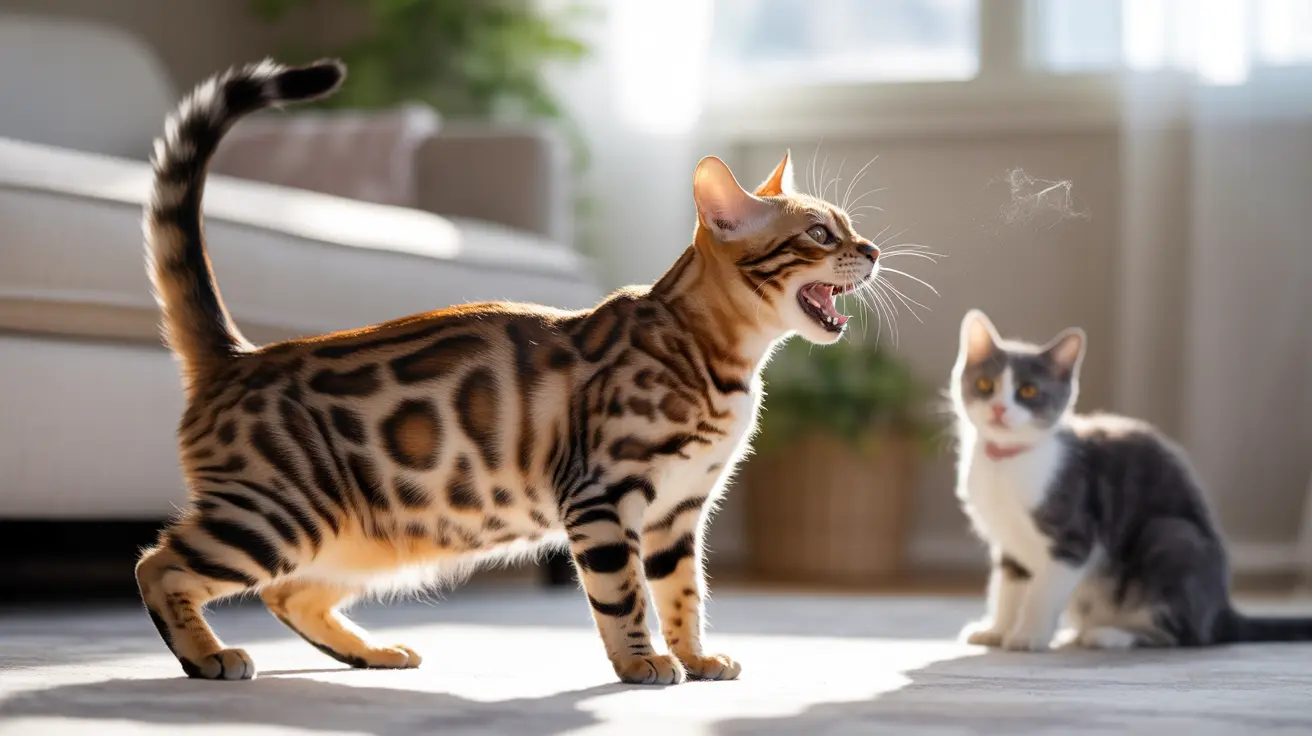Understanding Cat Fight Dynamics
Contrary to popular belief, most cat confrontations are more about posturing and intimidation than actual physical combat. Cats typically engage in a complex series of warning behaviors, including growling, hissing, and displaying an arched back, before any physical contact occurs.
These standoffs can last up to 30 minutes, with both cats attempting to assert dominance without risking injury. This natural instinct for self-preservation usually prevents fights from escalating to fatal levels.
Common Causes of Cat Fights
Several factors can trigger aggressive behavior between cats:
- Territory disputes
- Competition for resources
- Mating rights
- Protection of offspring
- Social hierarchy challenges in multi-cat households
The Reality of Physical Confrontations
When cats do engage in physical combat, the encounters typically involve swatting, scratching, and brief biting. These fights rarely result in immediate death, as cats instinctively know when to retreat to avoid severe injury.
However, even minor altercations can lead to serious health complications if wounds become infected or if disease transmission occurs during the fight.
Health Risks and Complications
The most significant dangers from cat fights often come from secondary issues:
- Abscesses from deep bite wounds
- Bacterial infections
- Transmission of FIV (Feline Immunodeficiency Virus)
- Feline Leukemia Virus (FeLV)
- Stress-related health issues
Prevention and Safety Measures
To minimize the risk of dangerous cat fights, consider these preventive strategies:
- Spay or neuter your cats to reduce territorial aggression
- Keep cats indoors or supervise outdoor activities
- Provide multiple resources in multi-cat households
- Create escape routes and hiding spots
- Maintain regular veterinary check-ups
Frequently Asked Questions
Do cats really fight to the death, or is it just a myth?
It's largely a myth. While cats can fight aggressively, they typically avoid fighting to the death. Most confrontations involve posturing and threats rather than lethal combat. Deaths from cat fights usually result from untreated infections or diseases rather than the immediate fight.
How can I prevent my cat from getting into fights with other cats?
The best prevention methods include keeping cats indoors, spaying or neutering, providing adequate resources in multi-cat households, and supervising outdoor activities. Creating a stress-free environment with plenty of escape routes can also help prevent confrontations.
What are the most common injuries cats can suffer during a fight?
Common fight-related injuries include puncture wounds, scratches, abscesses, and torn ears. The most dangerous injuries are often deep bite wounds that can become infected if not treated promptly.
Can cat fights lead to serious diseases, and how can I protect my cat?
Yes, cat fights can transmit serious diseases like FIV and FeLV through bite wounds. Protect your cat by keeping vaccinations current, maintaining indoor status when possible, and seeking immediate veterinary care after any fighting incidents.
How can I tell if my cat has been in a fight, and what should I do next?
Signs of fighting include visible wounds, limping, changes in behavior, hiding, and loss of appetite. If you suspect your cat has been in a fight, examine them carefully for injuries and consult a veterinarian, especially if you notice swelling or signs of infection.
Conclusion
While cats can engage in aggressive behavior, they rarely fight to the death. The real dangers lie in the potential complications from injuries and disease transmission. By understanding feline behavior and implementing proper preventive measures, cat owners can help keep their pets safe and healthy.
Remember that prompt veterinary care after any fighting incident is crucial for preventing serious health complications and ensuring your cat's well-being.






